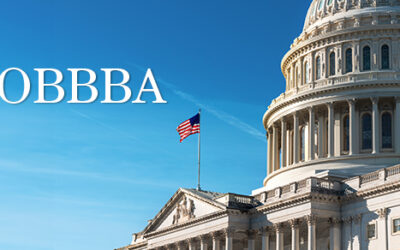If you own a small business with no employees (other than your spouse) and want to set up a retirement plan, consider a solo 401(k) plan.
This is also an option for self-employed individuals or business owners who wish to upgrade from a SIMPLE IRA or Simplified Employee Pension (SEP) plan.
A solo 401(k), also known as an individual 401(k), may offer advantages in terms of contributions, tax savings and investment options.
These accounts are geared toward self-employed individuals, including sole proprietors, owners of single-member limited liability companies, consultants and other one-person businesses.
How much can you contribute?
- You can make large annual tax-deductible contributions to a solo 401(k) plan.
- For 2024, you can make an “elective deferral contribution” of up to $23,000 of your net self-employment (SE) income to a solo 401(k).
- The elective deferral contribution limit increases to $30,500 if you’ll be age 50 or older as of December 31, 2024.
- The larger $30,500 figure includes an extra $7,500 catch-up contribution that’s allowed for older owners.
- On top of your elective deferral contribution, an additional contribution of up to 20% of your net SE income is permitted for a solo 401(k). This is called an “employer contribution,” though there’s technically no employer when you’re self-employed.
- For purposes of calculating the employer contribution, your net SE income isn’t reduced by your elective deferral contribution.
- For the 2024 tax year, the combined elective deferral and employer contributions can’t exceed: $69,000 ($76,500 if you’ll be 50 or older as of December 31, 2024), or 100% of your net SE income.
- Net SE income equals the net profit shown on Form 1040, Schedule C, E or F for the business, minus the deduction for 50% of self-employment tax attributable to the business.
What are the advantages and disadvantages?
- Besides the ability to make significant deductible contributions, another solo 401(k) advantage is that contributions are discretionary
- . If cash is tight, you can contribute a small amount or nothing.
- In addition, you can borrow from your solo 401(k) account, assuming the plan document permits it. The maximum loan amount is 50% of the account balance or $50,000, whichever is less.
- Some other plan options, including SEPs, don’t allow loans.
- This feature can be valuable if you need access to funds for business opportunities or emergencies.
- The biggest downside to solo 401(k)s is their administrative complexity.
- Significant upfront paperwork and ongoing administrative efforts are required, including adopting a written plan document and arranging how and when elective deferral contributions will be collected and paid into the owner’s account.
- Also, once your account balance exceeds $250,000, you must file Form 5500-EZ with the IRS annually.
You can’t have a solo 401(k) if your business has one or more employees. Instead, you must have a multi-participant 401(k) with all the resulting complications.
The tax rules may require you to make contributions for those employees
. However, there are a few important loopholes.
- You can contribute to a plan if your spouse is a part-time or full-time employee.
- You can also exclude employees who are under 21 and part-time employees who haven’t worked at least 1,000 hours during any 12-month period.
Who’s the best candidate for this plan?
For a one-person business, a solo 401(k) can be a smart retirement plan choice if:
- You want to make large annual deductible contributions and have the money,
- You have substantial net SE income, and You’re 50 or older and can take advantage of the extra catch-up contribution.
Before establishing a solo 401(k), weigh the pros and cons of other retirement plans — especially if you’re 50 or older. Solo 401(k)s aren’t simple, but they can allow you to make substantial and deductible contributions to a retirement nest egg. Contact us before signing up to determine what’s best for your situation.


